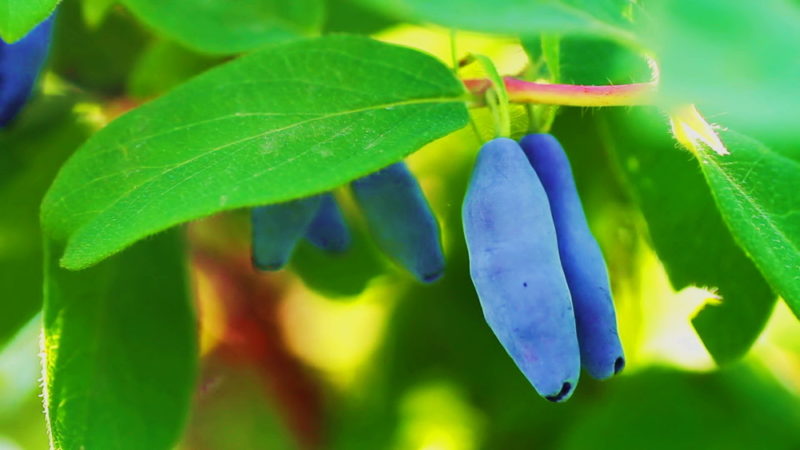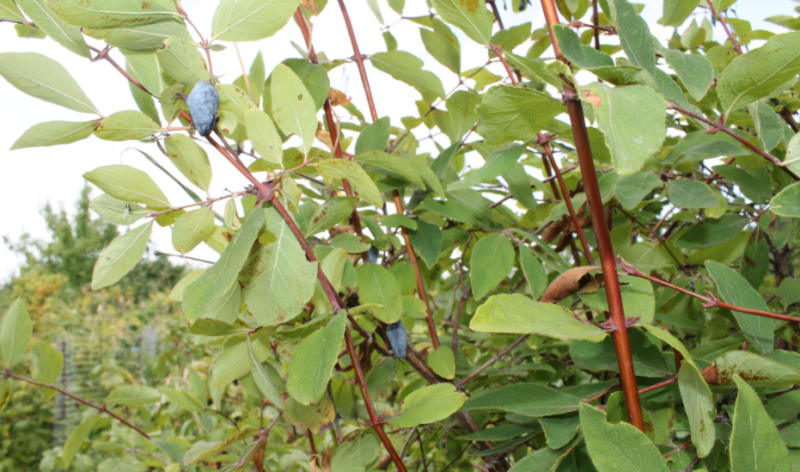Honeysuckle is a delicious and incredibly healthy berry. The culture is not picky and is in great demand among gardeners of all countries. Currently, there are many varieties of honeysuckle, but, unfortunately, not all are suitable for cultivation in the harsh conditions of Siberia and the middle zone of the Russian Federation. In this publication, we have collected and described the most hardy and hardy species, and among them you will surely find one that more closely matches personal requirements.
Material Content:
Honeysuckle varieties for central Russia and Siberia
Gardeners have long noticed the benefits of honeysuckle, in comparison with other fruit bushes, and therefore give the plant pride of place in their possessions, free up new plots for growing varieties promising for climatic conditions. What features should be endowed with honeysuckle, which can take root and give a harvest in the Urals, Siberia and other harsh parts of Russia?
The variety must meet the following characteristics:
- Winter hardiness. The culture can tolerate frosts without damage to -45 ° C, and after late spring frosts it is restored, at a time when other fruit trees lose up to 80% of the crop.
- Long life cycle. Honeysuckle successfully bears fruit up to 35 years with proper care.
- High profitability of the bush. The plant is compact, occupies small areas, but gives a plentiful harvest.
- Early maturity. Many berries in the middle zone of Russia and Siberia are not grown, since fruiting occurs late. And honeysuckle ripens in the first half of the summer season, so every gardener will be able to fully harvest.
- High immunity to diseases and harmful insects that attack crops in rainy or dry summers (which alternates in the regions of the middle zone of the Russian Federation, in Siberia and the Urals).
- Excellent fruiting in any conditions. Honeysuckle brings a consistently rich crop both in rainy and cold summers and in drought.
The following are the best varieties of honeysuckle, which are suitable for all prescribed characteristics.
Long-fruited:
- Sweet large berries of blue color. The skin is thin, the flesh is juicy.
- The shrub is medium-sized, slightly spreading, which allows each fruit to be open to the sun, and this is very important for the northern regions.
- Shedding fruit is absent, the berries ripen in concert. Harvest can be harvested from late May to late June.
Blue Spindle:
- Productivity is high, the fruits are sweet and sour. The skin is dense, but thin, the pulp is very juicy.
- Harvesting - from late May to mid-July.
- Variety minus - prone to shedding fruits, so they need to be collected in time as they ripen.
"Blue bird":
- Productivity is good, berries are larger and sweeter, sourness is almost imperceptible.
- Fruits are perfectly stored and transported, protected by a dense skin.
- Prone to shedding. Berry picking - from mid-June.
Tomichka:
- Hybrid of Siberian breeding, excellent fruiting in the suburbs, Chelyabinsk and other areas.
- The berries are sweet-sour, with a pronounced aroma.
- Harvesting - in June.
- Minus - high flaking crop.
"Moraine":
- The yield is slightly above average, from the bush - 1.5 to 2 kg of fruit.
- The berries are juicy and fragrant, delicious.
- Fruit picking - in June.
- Minus - the bush is prone to thickening, requires stable pruning.
The Leningrad Giant:
- One of the largest, berries can reach 5 grams.
- The fruits ripen amicably, beginning in mid-June.
Gardeners plant in their plots not only edible honeysuckle, but also decorative. Curly creepers perfectly decorate the attic, walls of the house, fences.
And the most suitable varieties for Siberia and central Russia will be the following:
- "Alpine";
- "Golden";
- "Maak";
- "Maximovich";
- “Ordinary”;
- “Covering”;
- "Tatar";
- Honeysuckle "Nymph".
Each of the varieties described has its own color of flowers and fruits. But berries of ornamental species are not eaten, they have only value decorating the landscape.
How and when to plant a bush
Both edible and ornamental crops are planted in spring or autumn.
- Dates of spring planting come when the snow is completely gone, and the soil warms up - from mid-April to the end of May. Late frosts to seedlings are not terrible, since the described varieties are endowed with high frost resistance.
- Autumn honeysuckle is planted in October, 2 to 3 weeks before the frost sets in. During this time, the young shrub will have time to take root and easily winter.
Honeysuckle loves sunny areas of gardens, protected from drafts. The soil should be fertile, based on black soil, and the complete absence of sand. As a drainage material, wood ash is excellent.
The plant does not tolerate acidified soil, therefore it is necessary to neutralize it with lime.
Seedlings choose two-year-olds, with a healthy root system and live buds. For 2 days, you need to place the honeysuckle with its roots in water, they are saturated with moisture and straightened. Next, you need to cut off all non-viable roots and shoots.
Landing technology:
- Dig holes that are larger in size than the volume of the roots.
- At the bottom, lay chipped brick or pebbles - this will be a drainage layer.
- Mix in equal parts chernozem, ash and compost. It is possible, but not necessary, to add superphosphate in an amount of 50 grams to a bucket of such a mixture.
- Put the roots in the hole, cover with prepared soil mixture, water.
- Soil settles, add to ground level. The root neck should remain on the surface.
- Mulch the area near the trunks, using sawdust, hay and spruce needles.
Outdoor Care
Honeysuckle is not a finicky plant.But if you want to get a good crop from the bush, then you must produce proper care.
It is very simple:
- Water as you dry the topsoil. Under one bush, add about 30 liters of water. A lack of moisture can lead to a deterioration in the taste of berries.
- Loosen the soil near the trunk.
- Make seasonal trimmings: in the spring, diseased, weak and dry shoots are removed, in the autumn - thickening, sprouting crowns and old branches. Trimming honeysuckle as needed.
- Use fertilizers: in spring - with nitrogen and phosphorus, in autumn - ash.
Watering during flowering is done only at the root, because you can wash off pollen if you use a hose. Further, the plant will not give up sprinkling, and the procedure must be carried out in the evening.
Honeysuckle breeding
From one adult bush you can always get 10 or more, you just need to multiply it correctly. The method of cuttings and division is used. We will describe each.
Cutting:
- A sharp secateurs in spring or summer need to cut off the year-old shoot.
- Place it for a day in a rooting agent, then plant it in fertile soil.
- Water the seedlings abundantly and cover with a film at night to create a greenhouse effect.
- After about a month, the honeysuckle will take root, and the greenhouse will no longer be required.
Bush division:
- You can dig out the whole bush, divide it into separate shoots with roots. And you can dig out only one growth, carefully separating it from the mother's root.
- Places of root sections are dusted with dust from coal, diseased and rotten areas are removed.
- Next, plant the stalk / cuttings as described in the planting instructions.
The second method is more productive, young bushes will certainly take root. But grafting can cause problems, because not every branch gives roots, it can simply die.
Features of care after fruiting
After the crop is harvested, watering must be halved. And if precipitation is consistently pleasing, then artificial irrigation is stopped altogether. Fertilizers do not need to be applied, the bush should rest after fruiting.
Closer to autumn, mulch must be removed from the bushes; pests can start in it, who will begin to look for a warm corner for the winter for their whole gluttonous family.
In winter, honeysuckle is not covered, it tolerates frosts well. The only thing is, you can throw bags on the bushes or fence them with nets, since in winter birds can eat living buds.
The rest of the care for honeysuckle after harvest remains the same: loosening and pruning.
Diseases, pests and methods of dealing with them
Of the pests of honeysuckle, aphids and midges are threatened for the most part.
You can fight insects by the following means:
- insecticides;
- ash (dusting of leaves after sprinkling);
- spraying with soapy water.
Shrubs are immune to diseases. But if you make the wrong care, or the summer turned out to be too rainy, that is, the threat of fungal diseases.
The following techniques can be saved from them:
- insecticide spraying;
- timely pruning of shoots (thickening, sick and old).
Gardeners can lose in the crop when attacked by birds who like to enjoy fresh berries. But you can protect bushes from birds by throwing nets on trees when tying fruits.
Honeysuckle is a useful berry that will help against many diseases and increase immunity. Due to its unpretentiousness and winter hardiness, the culture is grown even in the harshest regions of Russia. The description of the varieties above will help you choose the honeysuckle that will successfully grow and bear fruit in your garden!















